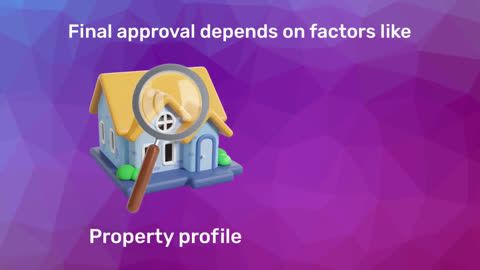What is a succession certificate?
A succession certificate is a legal document provided by the court to the legal heirs of a deceased individual, authorising them to inherit the deceased's movable assets, such as bank balances, securities, and debts. It acts as definitive proof of the successor, enabling the legal heir to manage and transfer the deceased's assets and liabilities.Key aspects of a succession certificate
- Issuing authority: Granted by a District Judge under Section 381 of the Indian Succession Act, 1925.
- Purpose: Assists in the transfer of movable assets and helps heirs handle the deceased's debts.
- Applicability: Required for inheriting bank accounts, securities, bonds, and other financial assets.
- Legal necessity: Compulsory for transferring movable assets in the absence of a will or nomination.
Legal heir certificate vs. succession certificate
While both legal heir certificates and succession certificates serve the purpose of facilitating inheritance, they differ in several key aspects.| Criteria | Legal heir certificate | Succession certificate |
| Issuing authority | District revenue officer, municipality administrative officer, Tehsildar, Talukdar | Issued by the District Judge |
| Purpose | Used to claim benefits like pensions, insurance, and to transfer immovable assets | Allows transfer of movable property, and management of the deceased’s debts and securities |
| Applicability | For legal heirs such as parents, spouse, children, or siblings of the deceased | Applicable to the deceased's heirs, including children or grandchildren |
| Conclusive evidence | No, this does not serve as conclusive proof | Yes, provides conclusive proof as per the Indian Succession Act, 1925 |
| Processing time | Usually issued within 10-15 days | May take up to 2 months, including the public notice period |
| Required for | Claiming benefits and transferring immovable assets | Necessary for transferring movable assets, managing debts, and securities |
| Legal requirement | Needed for claiming benefits but not mandatory for movable assets | Mandatory when transferring movable property without a will or nomination |
| Subsidiary documents | Acts as a supporting document in property transfers | Essential for the transfer of movable assets and inheritance |
| Process to obtain | Application to regional administrative authorities with required documents | Filing a petition in court, listing heirs and assets, followed by public notice |
| Common uses | Claiming family pensions, insurance, unpaid salaries, and property transfers | Managing bank accounts, securities, debts, and other financial matters of the deceased |
| Conclusion | Best suited for immovable asset transfers and benefit claims | Required for movable asset transfers and financial asset management |
Components of a succession certificate format
The succession certificate format contains the following important elements:1. Applicant’s name and relationship to the deceased
2. Details of the deceased
3. List of legal heirs
4. List of assets
5. Court’s authorisation
How to obtain a succession certificate
In India, a succession certificate is issued by the courts to the legal heirs of a person who passes away without a will and has outstanding debts or securities that need to be transferred. This certificate grants the holder the authority to collect debts or transfer securities without having to identify the rightful heir.It also offers protection to individuals or organisations owing such debts by validating payments made in good faith to the certificate holder. For this reason, many entities require a succession certificate before settling a deceased person's debts or transferring their securities.
Here are the steps to obtain a succession certificate:
1. Prepare the required documents: Gather the necessary documents such as the death certificate of the deceased, proof of relationship with the deceased, and details of the assets or debts to be transferred.
2. File a petition: Submit a petition to the District Judge of the jurisdiction where the deceased lived at the time of death. If the deceased had no fixed residence, file the petition in the district where any part of their property is located.
3. Provide heir information: The petition must include details of the deceased’s legal heirs, their addresses, and their relationship to the deceased.
4. Public notice: The court will issue a public notice, usually in local newspapers, inviting any objections to the granting of the succession certificate. This notice typically lasts for 45 days.
5. Court hearing: If there are no objections, the court will hold a hearing to verify the claims. In case of objections, the court will resolve them before proceeding.
6. Issuance of certificate: Once the court is satisfied with the evidence, it will issue the succession certificate, which will authorise the transfer of the deceased’s movable assets to the legal heirs.
Payment of court fees: The applicant must pay a court fee, which is usually a small percentage of the total value of the deceased’s assets or debts.
By following these steps, the legal heirs can obtain a succession certificate, allowing them to manage and transfer the deceased person’s movable assets such as bank accounts, bonds, and securities.
Succession and home loan
When dealing with succession and a home loan, several important steps and considerations come into play. Here is a breakdown of what typically happens:1.Identifying the heirs: When the original borrower of a home loan passes away, the legal heirs need to be identified. This is usually done through a succession certificate or a legal heir certificate.
2.Informing the lender: The heirs must inform the lender (bank or financial institution) about the death of the borrower. They need to provide the death certificate and the succession certificate or legal heir certificate.
3.Transferring the loan: The lender will then transfer the home loan to the legal heirs. This process involves verifying the documents and ensuring that the heirs are willing and able to take over the loan.
4.Repayment responsibility: The legal heirs become responsible for repaying the remaining loan amount. They need to continue making the EMI (equated monthly instalments) payments as per the original loan agreement.
5.Loan settlement options: If the heirs are unable or unwilling to continue with the loan, they have a few options:
- Prepayment: They can choose to prepay the outstanding loan amount if they have the financial means.
- Selling the property: They can sell the property to repay the loan. Any remaining amount after settling the loan can be distributed among the heirs.
- Refinancing: They can refinance the loan with another lender if they find better terms.
By ensuring that the necessary legal steps are taken, heirs can smoothly navigate the process of managing and transferring the deceased’s financial assets, securing their rightful inheritance while fulfilling any remaining obligations.




